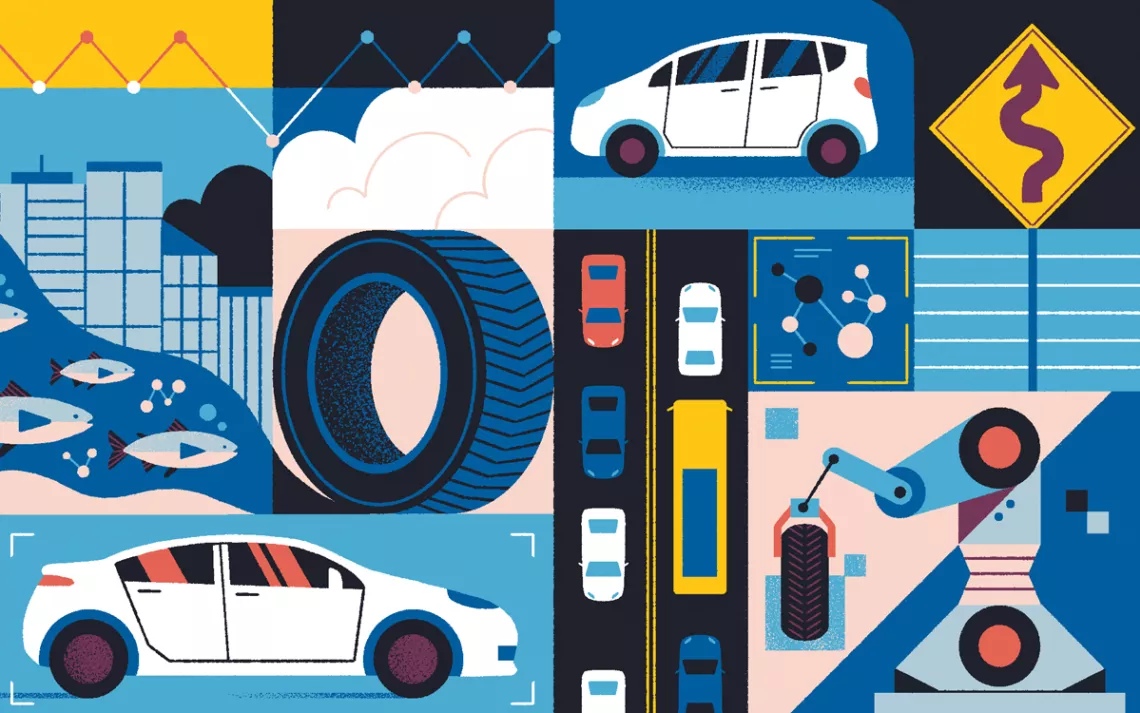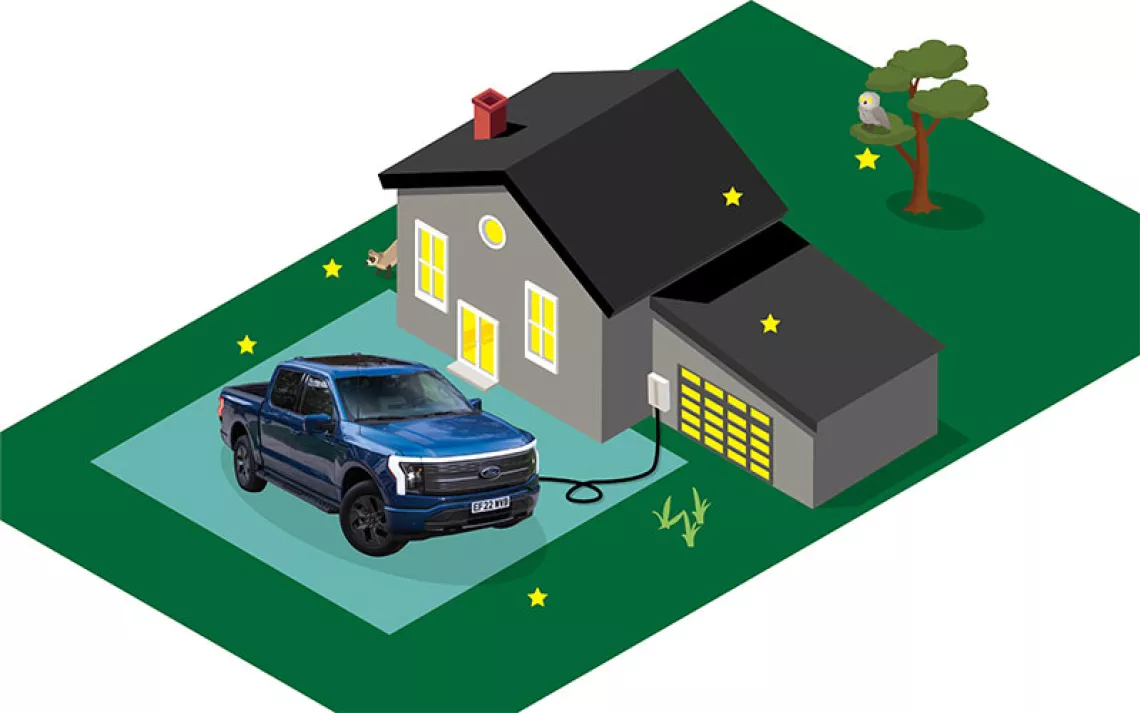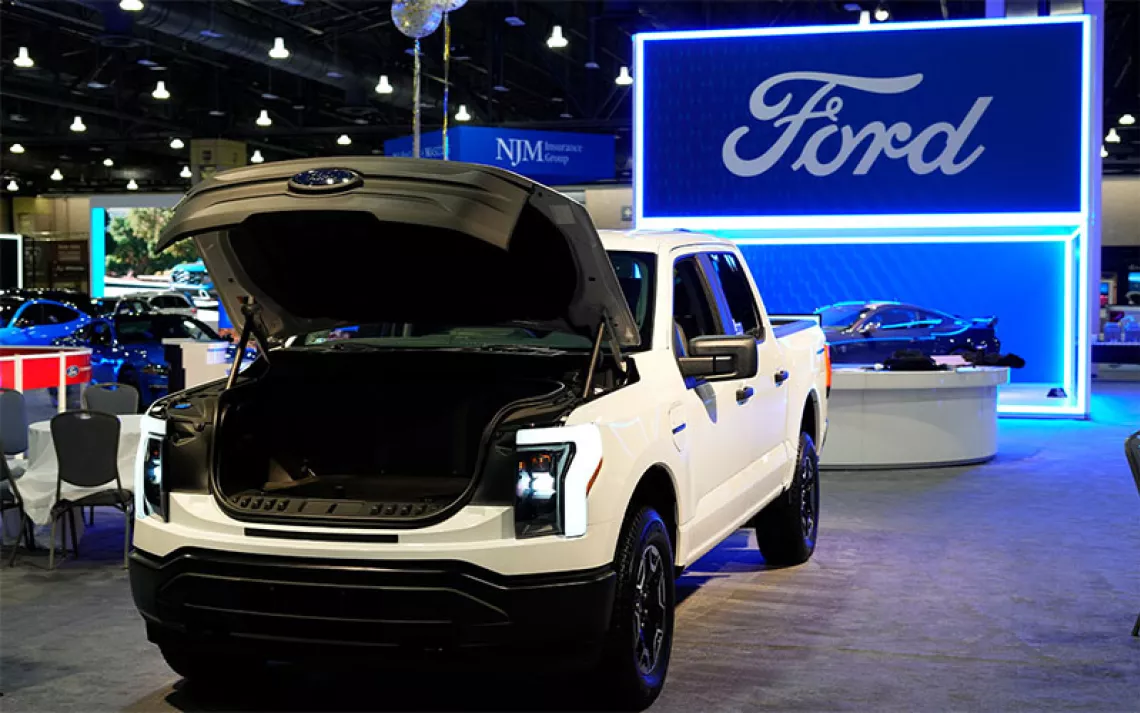EVs Have No Tailpipe Pollution, but There Are Still Problems When the Rubber Meets the Road
Hint: There's something hiding in the tires

The Environmental Protection Agency’s stringent vehicle and fuel regulations have dramatically decreased pollution from tailpipe emissions since the 1970s. Along the way, fully electric vehicles have become viable alternatives to their internal combustion engine counterparts. And yet there is another, overlooked source of pollution shared by both types of cars: Tires shed significant amounts of metallic particles, microplastics, and chemical compounds when the rubber meets the road.
The heavier the vehicle, the more particulate matter its tires release. That means electric vehicles, which weigh about 30 percent more than gas-guzzlers, are worse offenders when it comes to tire pollution. Electric vehicles’ batteries are responsible for the lion’s share of their extra weight. Standard car batteries weigh between 25 and 50 pounds, whereas EV batteries average 1,000 pounds. In the case of GMC’s Hummer EV pickup, the battery could weigh at least 2,800 pounds.
Tire production uses roughly 400 chemicals, and as scientists learn more about their negative effects, concern about them is growing. Tire particles can cause heart, lung, developmental, and reproductive problems as well as cancer in humans, according to an Imperial College London report, while one chemical called 6PPD-quinone has a devastating effect on marine life.
To mitigate these outcomes, governmental restrictions on manufacturing, scientific research on alternative materials, and changes in personal behavior need to accelerate.
Seattle’s Solutions

In the early 2000s, National Oceanic and Atmospheric Association scientists discovered that at least 60 percent of coho salmon in Seattle’s urban waters died before they had a chance to spawn, taking the next generation with them. Samples from waterways near the busiest roads had the highest levels of contaminants and the highest prespawn mortality rates. A research team from the University of Washington and Washington State University then honed in on automobile chemicals as the likely culprit. It took nearly a decade to identify that the dust shed from tires contains 6PPD-quinone,
an oxidized version of a chemical used to make tires more durable.
“We usually see like 3,000 chemicals in the creek, even though 98 percent of those, we have no idea what they are,” says Ed Kolodziej, a senior author of the study and a professor of civil and environmental engineering at the University of Washington. “We were one of the first groups in the world to use high-resolution mass spectrometry for stormwater and roadway runoff.”
Implementing green stormwater infrastructure is one short-term solution for stopping chemicals such as 6PPD from reaching wildlife. Seattle uses bioretention, bioswales, rain gardens, and green roofs to keep chemical pollutants from tires and many other human-made sources out of waterways. Filtering stormwater is only a Band-Aid, however, so long as harmful chemicals remain intrinsic to tire production.
Drive Slow, Pollutants at Play
In 2023, the California Department of Toxic Substances Control began requiring manufacturers to evaluate nontoxic tire materials. The Washington State Department of Ecology has also been looking for alternatives. But “chemicals similar to 6PPD that are most likely to be acceptable substitutes from a performance perspective are also likely to have similar hazard concerns from a human health and environmental perspective,” says Tanya Williams, 6PPD lead agency planner for the Department of Ecology. To date, there is no substitute, and the tires containing this chemical can last for over a decade.

Sign up to receive Sierra News & Views
Get articles like this one sent directly to your inbox weekly.
With this action you affirm you want to receive Sierra Club communications and may vote on policy designated by the Sierra Club Board.
While you can’t change the weight-related tire wear of your electric vehicle or the chemicals in those tires, you can cut down on tire shedding by changing your driving behavior. Aside from net-zero carbon emissions, one of the most appealing aspects of an EV is its ability to go from zero to 60 in three seconds. But the twisting force—also known as torque—of an engine capable of quick acceleration can increase the rate at which tires shed microparticles.
Slowing down is a simple way to also slow pollution. “If you drive very carefully, . . . then you can definitely reduce your tire wear,” says Nick Molden, CEO of Emissions Analytics, an independent vehicle-emissions and fuel-efficiency analytics company.
Rethinking Car Culture

The most thorough, long-term solution to tire pollution is moving away from using single-passenger cars altogether. You can do your part by carpooling, which reduces the number of cars on the road. Using public transportation (where it’s available) is an even better option.
Many cities, such as New York City, are in the process of converting their public bus fleet to electric vehicles. Riding these buses is a zero-carbon-emissions choice and, from a tire-pollution perspective, increases the power of the carpool strategy, as a public bus can remove as many as 42 single-passenger cars from the road. In addition to its environmental benefits, public transportation can be less stressful than driving and provide you with an opportunity to work or read.
Of course, if public transportation isn’t an option, take the ankle express. If you’re able to run errands or complete a short commute on foot, there are no carbon emissions, no parking hassles, and myriad health benefits—and it’s free. For medium distances, biking can close bigger gaps than walking and may be less tiring than you think. A battery-powered e-bike can assist with the hard work.
 The Magazine of The Sierra Club
The Magazine of The Sierra Club



